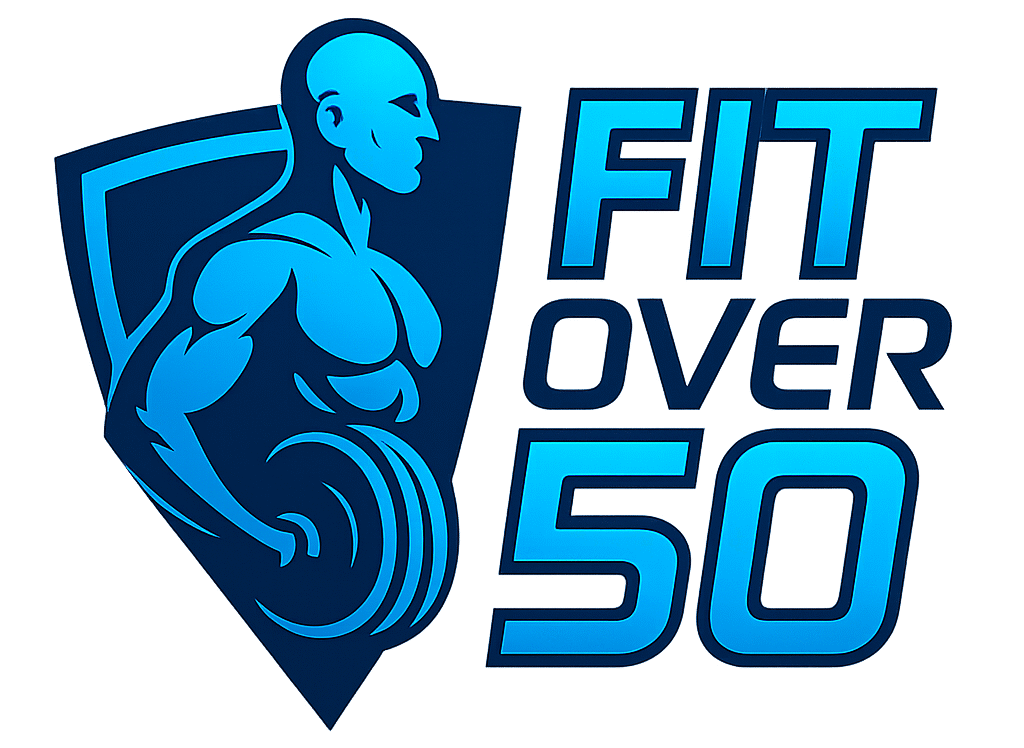Building muscle after 50 isn’t just possible—it’s a smart move for staying strong, energetic, and independent as you get older. You might hear some old-school advice that strength training is only for the young or that muscle growth slows down too much after 50, but that’s not really how it works. With the right plan, a good approach, and a bit of patience, you can add muscle and feel better than ever.

Why Muscle Building Matters Over 50
As I’ve gotten older, I’ve found that working out is about much more than looking good. It’s about feeling strong, moving well, and living life on your own terms. Loss of muscle (sarcopenia) starts to pick up speed after your forties, but it doesn’t happen overnight. I noticed that even simple things like gardening and going up stairs felt easier once I got back into regular strength training.
Keeping muscle on as you age helps with:
- Metabolism: Muscle tissue uses more calories than fat, which supports healthy weight and energy levels.
- Daily Function: Carrying groceries, getting up from the floor, or playing with kids feels easier.
- Joint Health and Balance: Strength workouts reduce fall risk and support healthy joints.
- Bone Density: Weight training puts beneficial stress on bones, making breaks and fractures less likely.
In addition to these benefits, building muscle can also support healthy blood pressure, stabilize blood sugar, and even give your mood a boost. Staying physically strong often means enjoying greater self-reliance, which is especially important as decades go by.
The Best Workout Schedule for Over 50
The best schedule is the one you can stick to comfortably and recover from well. When you’re over 50, aiming for strength training two to four times per week is ideal. Hitting each muscle group at least twice a week is beneficial for muscle growth, but splitting things up into shorter sessions instead of marathon gym days is a solid game plan.
Here’s a simple, flexible weekly plan for building muscle:
- Monday: Upper body strength
- Tuesday: Lower body strength
- Wednesday: Active recovery (brisk walk, yoga, or stretching)
- Thursday: Upper body strength (or full body if short on time)
- Friday: Lower body strength (or full body)
- Saturday: Light activity (walking, cycling, or swimming)
- Sunday: Rest
This routine keeps things fresh while giving your body enough time to recover between sessions. Recovery is crucial as you get older, and short, focused workouts can be highly effective. If you’re new to strength training, starting with three sessions per week is a great way to kick things off. As you make progress, you can add more frequency or intensity based on how your body responds.
Understanding the 3-3-3 Rule in the Gym
The 3-3-3 rule is a catchy way to plan your workout routine and manage progression. It means you:
- Do three sets of
- three exercises for
- three muscle groups per workout
So, on upper body day, you might pick three moves such as the chest press, row, and shoulder press, and do three sets of each. The next day, repeat this pattern with your legs and core. This setup makes it easy to hit all the main muscle groups without making things complicated. Keeping sessions short and focused is especially helpful if you want to avoid long workouts.
Can You Really Build Muscle After 50?
Absolutely. I’ve seen plenty of clients and fellow lifters add considerable muscle in their fifties, sixties, and beyond. As you get older, recovery might take a bit longer and you may need to pay more attention to form, but building muscle is totally do-able.
Several studies (see more on Harvard Health) show that strength training increases muscle mass and improves quality of life, even in seniors. Your body will adapt to new challenges no matter your starting point. Progress might not come as fast as in your twenties, but it absolutely still happens.
The 5-4-3-2-1 Workout Method Explained
The 5-4-3-2-1 method is an easy, time-efficient workout structure. It’s perfect for those tight on time or new to exercise routines:
- 5 exercises: Pick five different moves that cover the whole body (squat, pushup, row, overhead press, plank).
- 4 rounds: Cycle through the five moves four times total.
- 3 minutes each round: Aim to complete all five exercises within three minutes per round.
- 2 minutes rest: Rest for two minutes at the end of each full round.
- 1 workout: That’s your session!
This approach is great for mixing in some variety and speeding up your workout, especially on days when time or motivation is low. You can always swap out exercises or adjust the work-to-rest ratio to match your fitness level. The main thing is to keep the energy up and cover the big muscle groups.
Beginner Strength Training Plan For Building Muscle Over 50
I like to keep things simple and effective. You don’t need dozens of fancy exercises. Consistency, good technique, and a little progression go a long way. Here’s an example split that works for most people over 50 building muscle:
Day 1: Upper Body Push & Pull
- Chest press or pushups: 3 sets of 8-12 reps
- Seated or bent-over rows: 3 sets of 8-12 reps
- Overhead dumbbell press: 2-3 sets of 8-12 reps
- Lat pulldown or assisted pull-up: 2-3 sets of 8-12 reps
Day 2: Lower Body & Core
- Goblet squats or leg press: 3 sets of 10-15 reps
- Step-ups or lunges: 2-3 sets of 8-10 per side
- Hamstring curls or bridges: 3 sets of 12-15 reps
- Plank holds or side planks: 2 sets, 30-45 seconds each
Day 3: Full Body (optional)
- Dumbbell deadlifts: 3 sets of 8-12 reps
- Chest-supported rows: 2 sets of 8-12 reps
- Shoulder lateral raises: 2 sets of 12-15 reps
- Standing calf raises: 2 sets of 15-20 reps
- Bird Dog or gentle core moves: 2 sets of 8-10 per side
If you’re starting new, use light weights and focus on controlling each movement. Increase the resistance when the last couple of reps feel manageable. Safe, steady progress is the name of the game, and form always comes first. Don’t rush the movements—smooth and controlled is best for both results and injury prevention.
Things To Watch For When Starting Muscle Workouts Over 50
Setting yourself up for success means being realistic, kind to your body, and smart about recovery. Here are a few things I’ve learned (sometimes the hard way):
- Aim for Progress, Not Perfection: Gains can be slower than earlier in life, but steady progress piles up over time.
- Pain is Not Gain: Soreness is normal, but joint pain or sharp discomfort needs attention. Pay extra attention to your form and adjust weights as needed.
- Warm-up and Mobility: Some gentle cardio, dynamic stretching, and mobility work before lifting helps joints and muscles get ready.
- Listen to Your Body: Don’t skip rest days if you’re tired or not feeling well. Recovery is just as valuable as the workouts themselves.
- Include Protein and Stay Hydrated: Fueling your body with enough protein (about 0.7-1 gram per pound of your goal weight) and staying hydrated gives your muscles the resources they need to rebuild.
Also, be patient with yourself as you progress—you’re playing the long game now. Small improvements add up to big wins over months and years. Consider incorporating flexibility training, and don’t be afraid to ask for guidance or modify exercises to fit your needs. If something feels off, consult a doctor or physical therapist before pushing ahead.
Tips For Sticking With Your Muscle Building Routine
- Find a buddy or join a group. Social support can help you stick with it.
- Pick exercises you actually enjoy; it’s easier to make workouts last that way.
- Keep a simple journal of what you did, how much weight, and how you felt. Looking back on progress can be super motivating.
- Consider a session or two with a certified trainer who knows how to work with mature lifters for form checks and advice.
- Mix in some variety by occasionally changing your rep range or trying a new exercise to keep things interesting and avoid plateaus.
Frequently Asked Questions
What is the best workout schedule for over 50?
The best schedule is strength training two to four days a week, splitting upper and lower body, and making sure to give yourself enough recovery between sessions. Work each major muscle group at least twice weekly for the best results.
What is the 3-3-3 rule in the gym?
This rule means doing three sets of three exercises for three muscle groups in each session. It’s a simple way to build your workout and make sure you don’t miss any major movements.
Is it possible to increase muscle mass after 50?
Yes, muscle growth is possible at any age. Consistent strength training paired with good nutrition and patience is the recipe for success.
What is the 5 4 3 2 1 workout method?
This is a time-based circuit: pick five exercises, go through them for four rounds, do three minutes of work each round, rest two minutes between rounds, and you’re done!
Essential Equipment and Recovery Tools
You don’t need a fancy gym or costly gear to build muscle over 50. A set of adjustable dumbbells, a sturdy bench or chair, some resistance bands, and a mat for floor work are enough to get started. If you have access to a gym, machines are handy for learning proper form and safely increasing weight.
- Adjustable dumbbells or resistance bands are great for almost every exercise on these lists.
- Foam rollers or massage balls can give a boost to your muscle recovery when you feel sore after working out.
- Comfortable shoes and clothes make all the difference for motivation and safety.
- Use a timer or app to help you stick to rest periods, especially with the 5-4-3-2-1 workout style.
If you’re interested in more home gear, check out helpful resources like AARP’s guide on home gym equipment. There are options for every budget and space.
Staying healthy, strong, and active after 50 is about building habits that last. With the right weekly workout plan, a solid understanding of your body’s needs, and a bit of patience, building muscle is totally within reach, no matter what decade you’re in. You are never too old to get stronger—keep at it, and you’ll be amazed by how much better you feel in your daily life.

I didn’t use to weight lift; in fact, I started doing so in my mid-thirties. From then on, I continued to add a variety of exercises to my regimen. There is a lot of joy that comes from being able to lift an extra set or rep. After strength training, I feel a boost of energy, which is much welcome.
Do you prefer to work out with people? Or is music all you need to complete your workout?
Thank you Godwin for your comments. I currently work out in my garage at home but back when I went to a gym, I used to like taking classes (e.g. cardio, weights or kick-boxing) and it was great seeing the same people every week. I also agree with the boost of energy you get after strength training, especially if I’ve done better than previously and feel like I’m making progress.